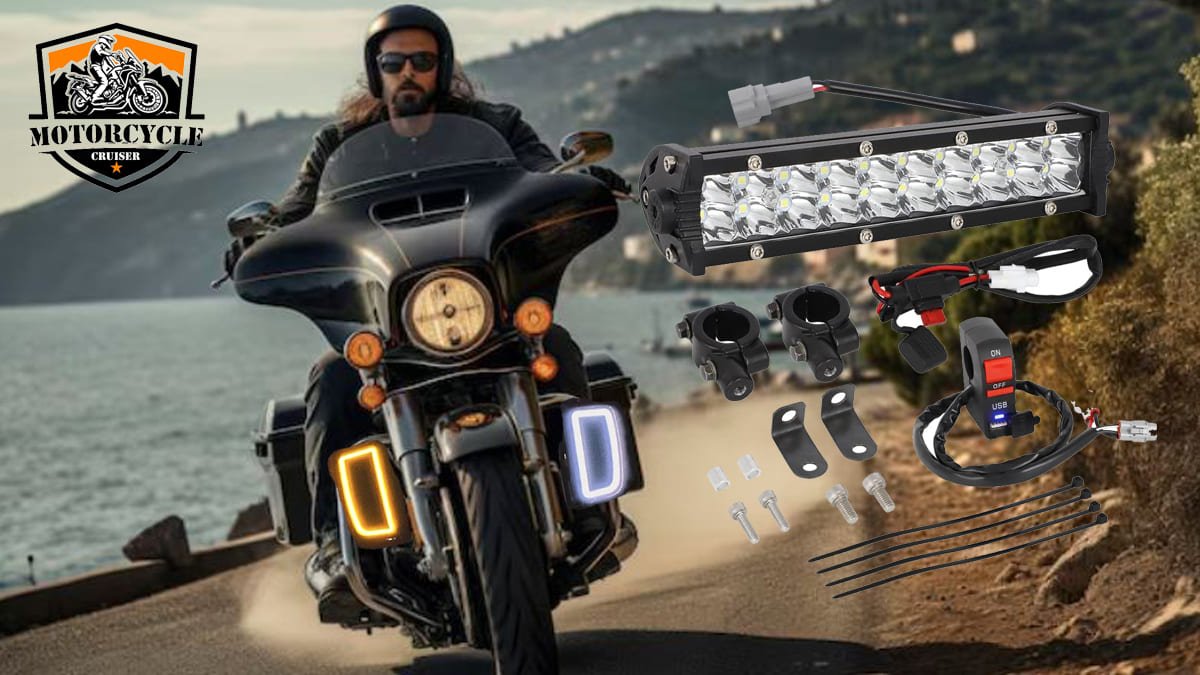Introduction and Basics
Introduction to Custom Motorcycle Race Fairing with Light Bar
A custom motorcycle race fairing with light bar is not just about making your bike look sleek; it’s also about improving aerodynamics and ensuring that your motorcycle performs at its best on the track. These custom setups can reduce drag, improve fuel efficiency, and provide better protection for both the rider and the motorcycle. If you’re new to the concept, consider exploring more about high-quality LED fairing lights and mirrors to understand the options available.
The Purpose of a Race Fairing
Race fairings are designed primarily to improve the aerodynamics of your motorcycle. By streamlining the shape of the bike, these fairings help reduce air resistance, allowing the motorcycle to cut through the air more efficiently. This reduction in drag not only increases speed but also enhances fuel efficiency. Furthermore, race fairings offer an added layer of protection, safeguarding the motorcycle’s engine and other critical components from debris and harsh weather conditions. For those interested in maximizing safety and performance, the Motorcycle Safety Foundation provides excellent resources on safety and lighting regulations.
Customization and Integration
Designing Custom Fairings with Light Bars
When it comes to custom motorcycle fairings, the possibilities are endless. You can choose from a variety of materials like carbon fiber or fiberglass, each offering different benefits in terms of weight, durability, and cost. The design of your fairing should not only complement the aesthetics of your bike but also enhance its functionality. Integrating a light bar into the fairing is a popular modification for those who ride in low-light conditions or participate in night races. For inspiration on motorcycle customization, check out the 2003 Kawasaki ZX-6RR and 636R overview.
Installation Process
Installing a race fairing with a light bar might seem daunting, but with the right tools and a bit of patience, it can be done at home. Here’s a step-by-step guide to help you through the process:
- Remove the old fairing: Start by carefully unscrewing and removing the existing fairing.
- Install the new fairing: Place the custom fairing onto the motorcycle frame, aligning it with the mounting points.
- Secure the light bar: Attach the light bar to the designated spot on the fairing, ensuring it is securely fastened and properly aligned.
- Test the setup: Once everything is in place, test the light bar and fairing for stability and functionality before taking the bike for a ride.
For those interested in DIY motorcycle projects, this process is a rewarding way to personalize your bike. For a detailed look at the design and installation of fairings, you might want to explore the spotlight on BMW’s 2003 motorcycle lineup.

Maintenance and Legal Considerations
Maintenance of Custom Motorcycle Race Fairing with Light Bar
To keep your custom fairing and light bar in top condition, regular maintenance is crucial. Here are some tips to help you:
- Routine Cleaning: Regularly clean the fairing and light bar with a mild soap solution to remove dirt and debris.
- Inspection: Periodically check for any signs of wear and tear, such as cracks or loose fittings, and address them promptly.
- Upgrades: Consider upgrading the light bar if newer, more efficient models become available.
For a deeper understanding of how these technologies have evolved, take a look at the revolutionary developments in KTM’s 2003 lineup.
Legal Considerations and Compliance
Before hitting the road or the track with your new setup, it’s essential to ensure that your custom motorcycle race fairing with light bar complies with local regulations. In some areas, the use of light bars on public roads is restricted or requires specific positioning and brightness levels. Always check the legal requirements in your area to avoid fines or other penalties. Additionally, if you plan to race, make sure your modifications comply with the rules set by the racing organization.
What materials are best for custom race fairings?
Carbon fiber and fiberglass are the most popular choices for custom race fairings. Carbon fiber offers superior strength-to-weight ratio but is generally more expensive. Fiberglass, on the other hand, is more affordable and still provides excellent durability, making it a common choice for custom fairings.
Can I use a race fairing with a light bar on public roads?
It depends on local regulations. In many regions, light bars are restricted on public roads due to their brightness and positioning. Always check with local authorities to ensure that your custom setup is legal for street use.
How do I maintain the aerodynamic efficiency of my fairing?
Regular maintenance is key. Ensure that the surface of your fairing is clean and smooth to minimize drag. Additionally, periodically inspect the fairing for any damage or wear that could compromise its aerodynamic properties.
Are there any legal issues with adding a light bar to my motorcycle?
Yes, there can be legal considerations, especially regarding the brightness and positioning of the light bar. It’s crucial to ensure that your light bar complies with local laws, particularly if you plan to ride on public roads.
What are the best light bars for motorcycle race fairings?
The best light bars are those specifically designed for motorcycles. Look for options that are durable, weather-resistant, and provide sufficient brightness without causing glare for other road users.
Conclusion
Customizing your motorcycle race fairing with a light bar is a rewarding endeavor that can significantly enhance both the aesthetics and performance of your bike. Whether you’re looking to reduce drag, improve fuel efficiency, or simply make your motorcycle stand out, a custom fairing with integrated lighting offers numerous benefits. However, it’s important to consider the legal implications and ensure that your modifications comply with local regulations, especially if you plan to ride on public roads.


